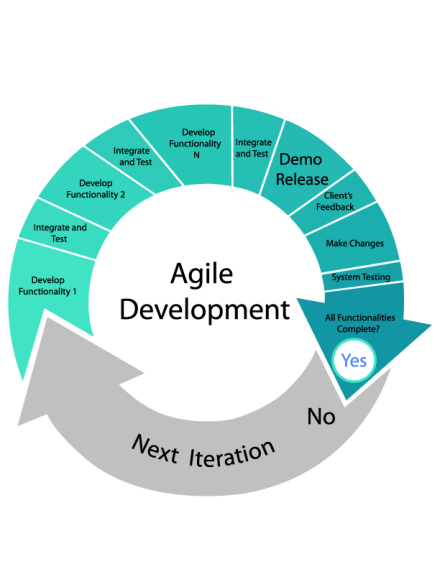AGILE seems to be the mantra that drives the IT industry today. This methodology seen as a successor to the rudimentary waterfall model, is a robust system which in layman terms can be explained as a methodology that differs from the waterfall approach in that it is iterative in nature and the different phases of the SDLC, namely, Requirement Analysis, Design, Development etc. takes place in quick short cycles called sprints which allows for ample feedback and tighter controls and promises customer delight.
The scrum master in addition to the Project manager and team leader checks for any deviations from the agile model and acts as an effective controller to make sure the resources are channelized ably to achieve the short cycle goals which , leads to crafting the bigger picture according to this model.
As a HR professional entering an IT environment practicing the agile model so fervently, he/she needs to be aware of the fallouts of its implementation in organizations and the its implications on the different functions of HRM.
Learning and Development, has become a continuous, everyday process with conservative(to embrace technology) companies facilitating cross functional sharing through their portals , company blogs and Enterprise content management tools like SharePoint , Documentum , Jive etc., which are fast gaining popularity. Thus L&D is not restricted merely to classroom and one need not wait for the experts to impart knowledge , it happens through peer learning and with easy access and availability of information, the employees indeed stand to gain.
Performance Management too, in the agile way is not a standalone process of appraising employees at the stipulated time of the year. It is dynamic since the feedback is constantly fed into the process. However it is extremely daunting for the appraisers since this methodology is directed at self -managed, cross functional teams. Here teams are held more accountable than individuals. Sometimes evaluating and comparing employees from different functions can lead to disparities and discontented employees. In this fast paced world of agility, even recruitment happens in the blink of an eye. Employers today source their prospective employees through the social media like LinkedIn and MySpace and rollout offer letters for immediate employability and unhindered productivity.
Like I mentioned earlier, agility is modelled for customer delight but what is in store for the IT professional involved in a project that believes in agility? Does it delight the IT whiz as well? Well, continuous learning, evaluation, moderation and control, the so-called striking features of the agile model can often lead to disgruntled employees since it means busy schedules, constant monitoring and being accountable as there are scrum calls which track daily performance and progress.
Having said that, agile also aids an employee’s growth and accountability and builds his/her learning curve and aids career progression. Hence, the company practicing agile methodology should adopt employee friendly HR initiatives to ensure that they are happy. Like they all say “happy employees indeed lead to happy customers!!”
Author : Radhika K Iyer














